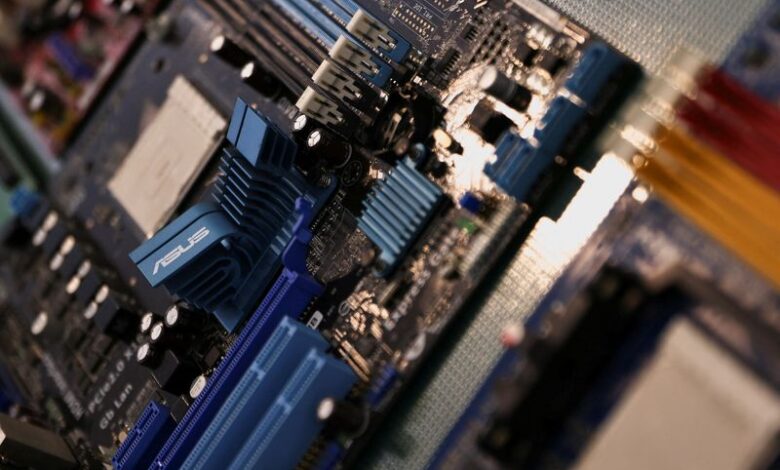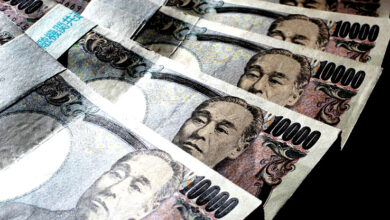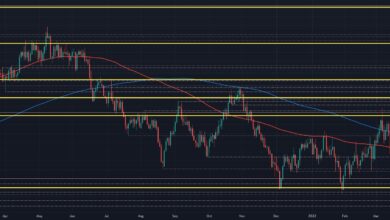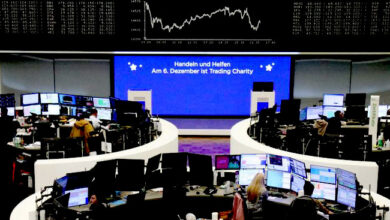Factbox: Chinese chipmakers are caught in a tech fight between the U.S. and China.

(Reuters) – SHANGHAI (Reuters) -The United States is putting a lot of pressure on China’s semiconductor industry. To slow down its rival’s technological progress, the US has put a lot of export restrictions on different parts of China’s chip supply chain.
Beijing has spent a lot of money building up its own chip industry, but its fabrication plants, or “fabs,” still use a lot of foreign-made equipment to turn slabs of silicon into chips that power hardware.
Here are the Chinese factories that are being hurt the most by U.S. restrictions:
SEMICONDUCTOR MANUFACTURING INTERNATIONAL CORPORATION (SMIC)
SMIC is China’s biggest chip factory. It makes chips that are used in a variety of products, including cars, Internet of Things devices, and some smartphones.
The company was started in 2000 with help from the government of Shanghai. It is China’s answer to Taiwan Semiconductor Manufacturing Co. Ltd. (TSMC), but it is far behind in terms of technology and money. The most valuable chipmaker in the world is TSMC, which has big clients like Apple Inc. (NASDAQ:AAPL) and Nvidia Corp. (NASDAQ:NVDA).
The US took notice of the company because it was backed by the government and wanted to make high-end chips. In 2020, the US put the company on its Entity List. The placement stopped the Dutch company ASML Holding (NASDAQ: ASML) from giving SMIC the important extreme ultraviolet lithography machines it wanted.
Most of SMIC’s sales are still made with the old 45 nanometer process node and higher. Since late 2020, specialising in older chips has been a good thing because there aren’t enough low-end chips on the market.
Still, its share of the global market for pure-play foundries is still in the single digits, and its sales and R&D spending are still a lot lower than those of TSMC.
In 2022, researchers were shocked to find that the company had made a chip that seemed similar to TSMC’s 7 nanometer process node technology, even though it hadn’t used any ASML equipment.
Experts disagreed about how well the breakthrough would work in the long run. SMIC hasn’t said anything about the results.
Hua Hong Semiconductor Ltd.
The second largest fab in China is Hua Hong Semiconductor Ltd. It was started in 1996 and uses mature-node technology. Most of its money comes from chips made at the 55 nanometer process node and higher.
The company has put less effort into making advanced nodes than SMIC. It wants to go public again in 2023 and build a new factory in the city of Wuxi, which is in the east.
The company’s name is Yangtze Memory Technologies Co., Ltd. (YMTC).
YMTC is the only company from China in the global NAND memory market, which has been dominated for a long time by a small number of companies from the United States and Korea. It makes chips and designs them. Last year, it was added to the U.S. Entity List.
Even though YMTC has a small share of the market as a whole, experts say it has steadily become part of the Chinese supply chain and that its prices and quality have become more competitive.
It showed off a chip with 232 layers of memory cells last year. This brought the company closer to competitors like Samsung Electronics (OTC:SSNLF) Co. Ltd. of South Korea. Experts said that the restrictions on exporting equipment are likely to stop further efforts.
YMTC was started in 2016 with help from the Wuhan government and the China National Integrated Circuit Industry Investment Fund. Before that, it was part of the chip conglomerate Tsinghua Unigroup. Later, it was spun off as its parent company restructured because it was about to go bankrupt.
Changxin Memory Technologies (CXMT)
CXMT is the only major company in China that designs and makes DRAM chips. DRAM memory, like NAND memory, has been dominated for a long time by a small number of companies in the US, South Korea, and Taiwan.
It already has one fab running, and it is building two more. It makes DRAM at the 19 nanometer node and is moving to the 17 nanometer node, which are both process nodes behind the leading edge of the industry.
Researchers at Trendforce wrote that the restrictions on exporting equipment that have been in place since October might change plans for growth.





